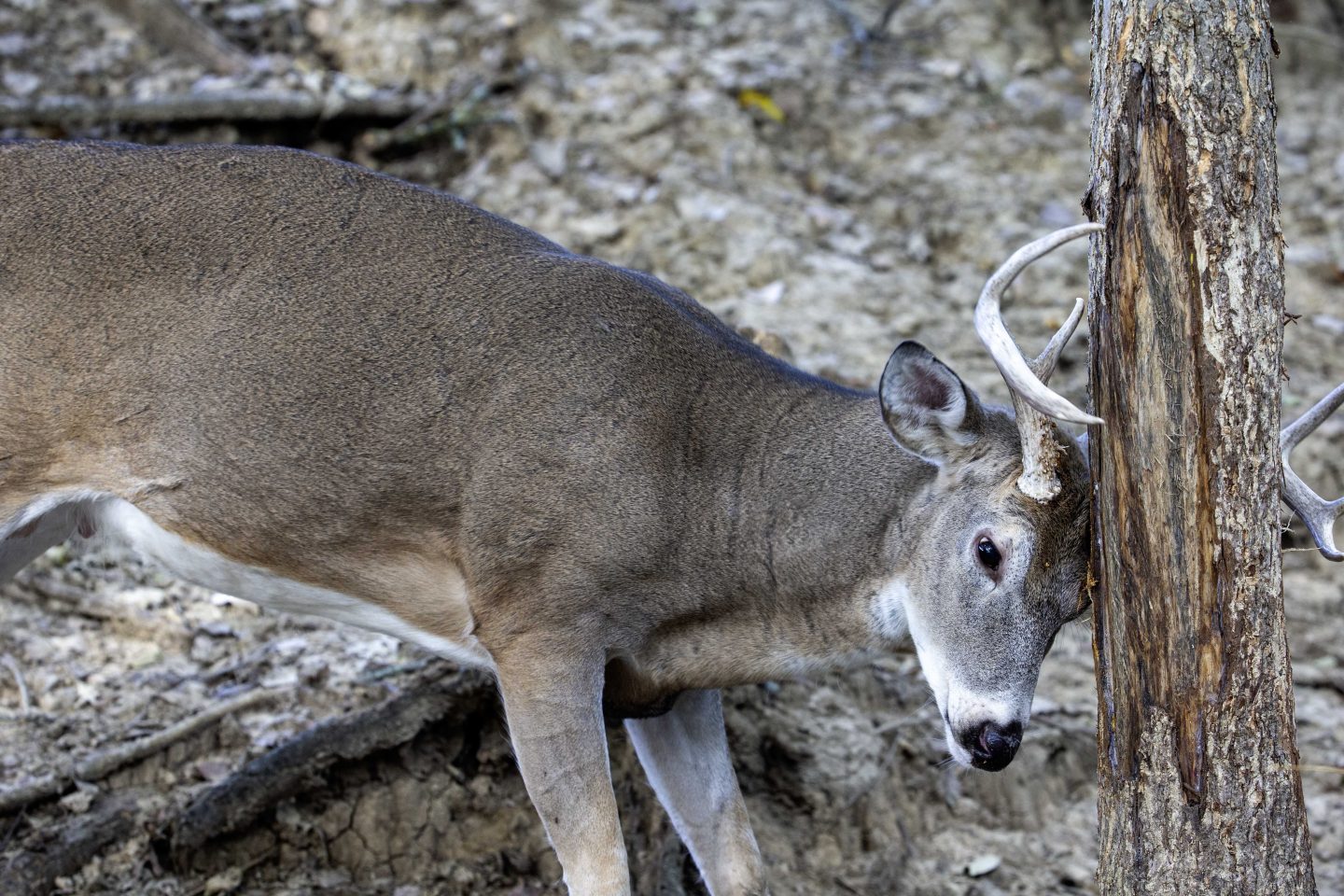
By Julie Geiser
Deer are social animals who communicate with sounds and signs. The signs they leave behind and how to interpret them can be clues for hunting success.
Mature bucks can make hundreds of rubs and scrapes from late summer to the rut, the deer breeding season, but only a handful of these signs get used during the hunting season. Key factors such as food sources, cover, travel corridors and bedding areas as deer transition from summer to fall and winter play a big part in which areas you should focus.
Deer Rubs
Rubs are good places to scout as they are typically along deer travel corridors. Before the rut, bucks rub on trees to remove velvet off their antlers and to build neck muscles for sparring during the rut. These rubs most likely won’t produce much hunting action.
As the rut nears, bucks leave their scent on trees from glands on their foreheads to establish territories and dominance — these are the rubs to look for, especially those on the edge of a food source. If you are the only one hunting an area, this could be a good spot to set up as a buck will check his rubs every few days. If it’s public land and there is a lot of hunting pressure, this area could be tough to hunt.
A rub line, where a buck has shredded several trees with his antlers, shows a distinct direction that a buck prefers to travel in the morning and evening from bedding to feeding locations or vice versa. Set up near this line, but keep your scent from blowing toward the area and stay out of sight.
Clusters of rubs with no notable pattern in thick cover tells you a buck is comfortable in this location. It could be bedding areas for one or several bucks. Find a trail or pinch-point where deer are traveling near the cluster, and this could be a great hunting location. Hunt these areas in the mornings as the buck returns from feeding to bedding areas. This way, you won’t chance spooking him away from his comfort area when trying to get into a tree stand for an evening hunt.
Deer Scrapes
A buck will scrape the ground, clearing it of vegetation, urinate in the scrape and leave scent on any tree limbs above the area by licking them or by rubbing his scent from glands on the top of his head. Scrapes become the internet of communication between deer as they travel to and from feeding and bedding areas. As does go into estrous, they will urinate in the scrape, and bucks will be able to follow their scent with hopes to breed.
Not every scrape produces deer, however, and hunters can waste a lot of time setting up on scrapes. Bucks tend to check scrapes during the night in areas with substantial hunting pressure. Bucks will also go downwind to scent-check the scrape from a distance.
Make sure the scrape location has good cover to allow a buck to feel safe to check it during shooting hours. Create mock scrapes with doe-in-estrous scents near a buck scrape to lure the testosterone-filled buck toward your ambush location.
When you have a combination of active rubs and scrapes, you know you have a good place to set up.
Trails and Scent
Scout for areas where several trails intersect, especially those that come from a thick bedding area to food sources. If there is an active rub or scrape with a trail leading to it, chances are many deer will be checking these as the rut gets into full swing.
Bucks prefer trails in thicker cover where they can check out open areas and sample the wind for does, other bucks and hunters. Be sure to cover your scent when in the field. Don’t leave your scent when hunting near rubs, scrapes and along trails. Use a scent blocker on clothing and wear knee-high rubber/muck boots. Avoid touching anything with your bare skin, especially when making a mock scrape, putting out scent wicks or climbing into a tree stand.
Learning how to read deer sign can start in early spring when looking for sheds, and you can keep at it until fall. Putting time in the field can help hunters learn more about deer sign; when rubs, scrapes and trails are being used; and how to locate great hunting locations.
